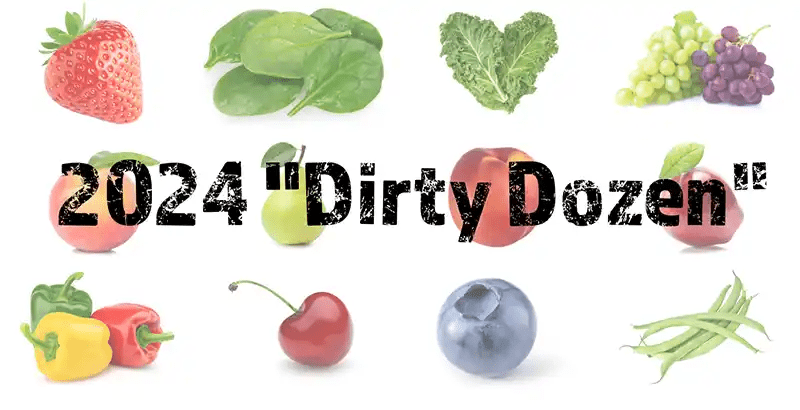The produce industry has felt attacked by Environmental Working Group’s Shopper’s Guide to Pesticides in Produce, the Dirty Dozen, for years and is now fighting back more effectively.
EWG’s messaging in its 2024 version, released March 20, hasn’t changed: that there are conventional fruits and vegetables with harmful residues from pesticides and fungicides that consumers should avoid by buying organic versions of them.

The industry has countered that these are scare tactics, and the USDA’s annual Pesticide Data Report shows consistently that organic and conventional fresh produce is safe and healthy.
The Alliance for Food and Farming offers toxicologists’ analysis that a child could consume 1,448 strawberries, 1,888 peaches, 2,303 nectarines or 1,468 potatoes in a day and still not have any health effects from residues, which shows how minute residues are, if present at all. Basically, the poison is always in the dose.
In past years, mainstream and social media has run with the Dirty Dozen because it’s shocking for their readers to hear how wholesome things like strawberries and salad lettuce is deadly.
Never mind that it isn’t scientifically accurate.
The AFF’s Teresa Thorne said this year has been the second lowest media and social media pickup (behind 2020 right at the start of the pandemic) for the Dirty Dozen.
“There’s been a remarkably quick drop-off with mainstream media and social media as well,” she said.
Thorne said AFF has been more aggressive this year running and sending blog posts discrediting the EWG’s list before it released it and talking to media groups, like CNN, to provide farmers, scientists and dietitians to talk about the healthfulness of fruits and vegetables, and how the Dirty Dozen is nonsense, scientifically.
Not only that, but this year the AFF has been more vocal about the EWG’s motivations, Thorne said.
When asked about its motivation in the past, AFF has mostly deferred, and said “ask them.”
Not so this year.
“EWG’s motivation in releasing this list is not about consumers, health or safety. Their interest is in using fear as a motivation to move consumers toward their donors’ preferred food options and raise money among their constituent base,” AFF said in a blog post last week. AFF: What EWG doesn’t want you to know: Part 3 – Produce Blue Book
“As we continue to see decades of research replicated about the incredible health benefits of eating a diet rich and fruits in vegetables, it has become increasingly important to stop fear from being another barrier to consumption for consumers. Therefore, discussing EWG’s motivation is necessary (For those who still believe the “Dirty Dozen” list is some kind of a public service, why is there a “Donate Now” button on every single piece of content concerning the list? Every. Single. Piece.)”
Thorne said she believes the earlier pushback, better access to media groups, and proactive messaging is helping blunt the Dirty Dozen’s effectiveness and exposure.
“We’re gratified to see so many media outlets decline to cover or at least balance their coverage and its rapid decline on social media,” Thorne said.
It’s also likely that EWG’s more overt donation-seeking is a turn-off to consumers who may have thought it was a public service, but it’s actually a politically and financially motivated agenda.
In any case, the Dirty Dozen’s power is fading, and consumers are the winners.



